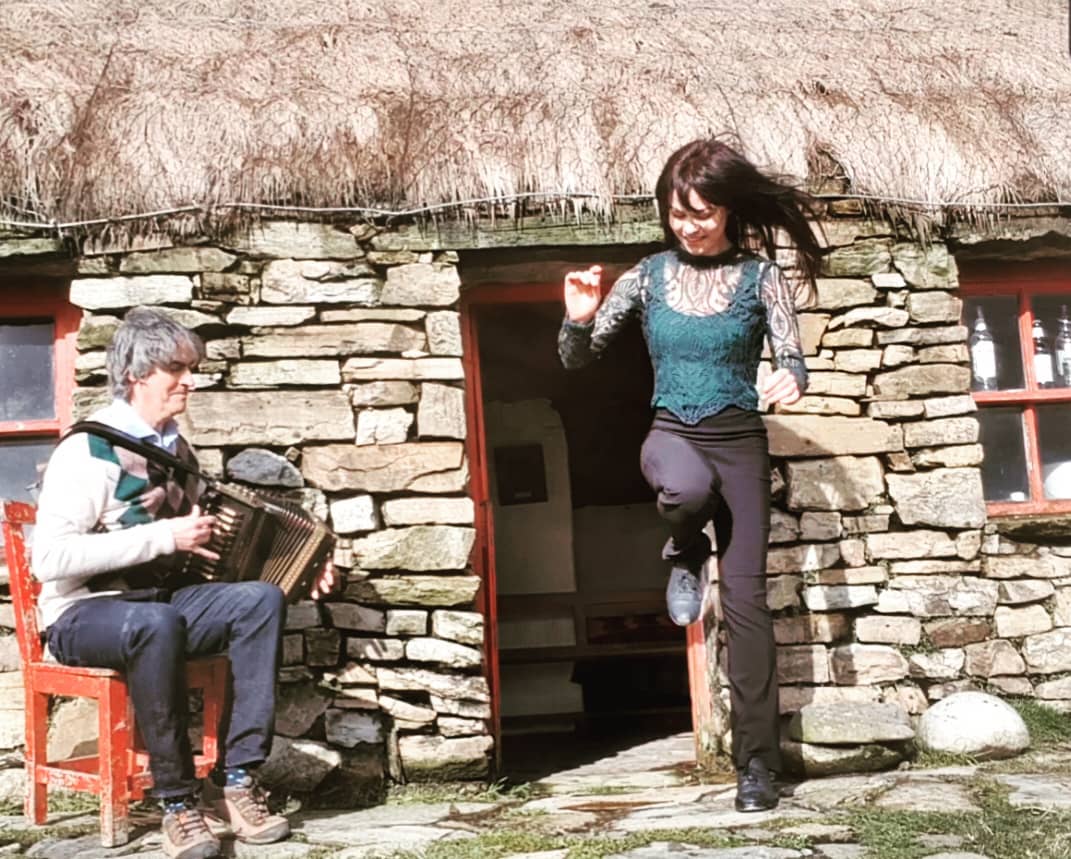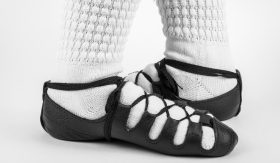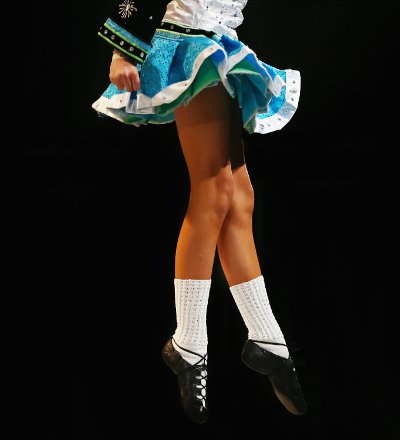IRISH DANCING existed before Riverdance, but its reach was limited. While it thrived in Ireland and amongst the Irish diaspora, it certainly couldn’t be described as a global phenomenon. Then Riverdance came along and blew us all away.
The success of Riverdance is astounding. It has literally danced its way around the globe, with sell-out shows on every continent. Along the way, it has made history and broken records. In 2003, it was the first Western show to perform at The Great Hall of the People in Beijing and in 2013, Irish dancers from forty countries gathered in Dublin to set the record for the longest Riverdance line – it was 1,693 dancers in case you’re wondering!
Later this month, Lord of the Dance will celebrate its 25th anniversary, and the Irish Post spoke to Michael Flatley about what makes it so special.
Riverdance showed us what Irish dancing could be. It’s certainly a long way from its days as a form of torture for Irish schoolchildren, who would line up reluctantly to do their aon, dó, trí’s. Today, it has reached a point where even people with no connection to Ireland are learning to dance.
Early days
Irish dancing as we know it today evolved over centuries, but its roots stretch all the way back to the Celts, who danced around sacred trees as part of their religious celebrations. Later, the Normans arrived, bringing their own style of dancing to the towns they conquered and influencing local traditions. By the sixteenth century, dancing was a popular pastime. In 1569, the Lord Deputy to Ireland wrote to Queen Elizabeth I, describing the beautiful girls who danced jigs in Galway and relating how dancers formed into straight lines. Apparently, Queen Lizzie was a big fan of the Irish jig.
By the late seventeenth century, dances like the Irish Hay, the Rince Mór (big dance) and the Rince Fada (long dance) were popular. In 1691, English author John Dunton wrote of the Irish: ‘on Sundays and Holydays, all the people resorted with the piper to the village green, where the young folk dance till the cows come home. There was no occasion from which dancing was absent.’
 Award-winning Irish dancer Emma O'Sullivan
Award-winning Irish dancer Emma O'Sullivan
Up until the eighteenth century, however, Irish dancing was a casual pastime. That all changed with the dancing masters, the first people to put a formal structure on Irish dance. These colourful characters travelled the country, teaching Irish dancing to rich and poor alike. The dancing masters were influenced by the French quadrille dance of the time, which involved four couples dancing in a square formation. Under their tuition, this French style evolved into Irish set dancing. But they taught many other dances, too.
Dancing Masters
Each dancing master had his own steps and style, jealously guarded and passed on before he died. They developed group dances as a means of involving people of all skills. The best of the dancers would be called on to dance solo, a coveted position indeed. This evolved into step dancing – the most familiar type of Irish dancing and the one we’re familiar with from Riverdance.
Each dancing master had his own territory, which resulted in regional variations in the dances. If one dancing master invaded another’s patch, there might be a dance off. The masters would dance on a raised platform of sorts – sometimes a door taken off the hinges and laid on the floor or perhaps on a table or half barrel – to display their intricate footwork. They would dance until one of them could go no more.
In those days, people went to house or crossroad dances. In fact, it’s believed that Irish dancers kept their arms straight because of the limited dancing space in a small country cottage. These dances were relaxed affairs and could go on until dawn when people would go home to milk their cows.
The Gaelic revival
If the dancing masters brought structure to Irish dancing, it was the Gaelic Revival that brought Irish dancing to the world. The Gaelic Revival was a period during the later years of the nineteenth century when Irish nationalists sought to drum up national pride by highlighting Ireland’s unique and rich cultural heritage.
During this time organisations like the GAA were set up to reconnect Irish people with their lost traditions and culture. The Gaelic League was one such institution. Established in 1893, its aim was to keep the Irish language alive. It set up branches all over Ireland and England where ordinary Irish men and women could learn their native tongue.
One of these local branches was central to the development of Irish dancing. The London Gaelic League was set up in 1896. At that time, Scottish céilí nights were taking place in London and in 1897, the London Gaelic League, recognising that a social element would draw more people than language classes alone, followed suit. It organised its first céilí at London’s Bloomsbury Hall.
More Classes
The London Gaelic League also began to give dance classes. These were taught by Patrick Reidy, an Irishman living in London who had been a dancing master back in his native Kerry and had inherited traditions that stretched back into the previous century. Reidy taught group dances (later called céilí dances) which were much easier than step dancing and more fun for his students.
The classes and céilí nights became an established part of the activities at the London Gaelic League. Some of its members even travelled to Ireland to meet other Munster dancing masters, from whom they learnt new dances. The dances spread to other British branches of the Gaelic League and by 1900, they had filtered back to Ireland. Around this time, League branches began to organise feiseanna (competitions) and so, within the space of a few short years, the twin phenomena of the Irish céilí and the feis were born. These cultivated greater interest and participation in Irish dancing.
 Feet in Irish soft shoes
Feet in Irish soft shoesDevelopment
The Gaelic League’s role in the development of Irish dancing wasn’t all plain sailing, however. There was disagreement as to which dances should be allowed, with some objecting that foreign dances and dances influenced by foreign cultures should be banned. Set dancing, developed by the dancing masters in response to the French quadrille, was one style that came up for the chop. Some pointed out that set dancing had been practised in Ireland since the eighteenth century, but the Gaelic League was determined to retain only those dances that it considered uniquely Irish.
Gaelic League
The League also discouraged regional styles of dancing, focusing instead on teaching the Munster style with its rigid arms. Regional styles – such as the Galway sean-nós style with its low foot movements and extravagant arm gestures – were suppressed. Such dancers could not even compete in feiseanna organised by the Gaelic League.
The Munster style became the national style of Irish dancing. The dancing masters continued to teach their own individual styles around the country and people continued to dance to them at house and crossroad dances. In later years, An Coimisiún le Rincí Gaelacha (The Irish Dancing Commission) was set up to determine how Irish dancing might be better organised. As part of its work, it tried to recover the dances that had been rejected by the Gaelic League, but many were lost forever.
Céilís
The Gaelic League céilís were more formal and structured that the traditional house and crossroad dances. Some were critical – Padraig Pearse, for instance, feared that removing dancing from the Irish cottage would be the death of it. Nevertheless, the League organised céilís in town halls all over the country, with the support of the Catholic clergy who had long fretted about immoral goings-on at house dances.
Around this time, the Gaelic League staged public demonstrations of Irish dancing both in Ireland and America. The dancers were dressed in costumes based on images from old manuscripts, with a tunic style dress and a cape. In later years, Irish dancing schools began to use similarly styled costumes to identify themselves – and so the ‘traditional’ costume emerged.
The Gaelic League changed Irish dancing, that’s true. But all cultures must evolve or die. Could Irish dancing have spread across the globe were it not for the Gaelic League? Its emphasis on structure, rules, lessons and feiseanna enabled Irish dancing to become what it is today.
Irish Dancing colonises the world
By the turn of the twentieth century, there was already a vast Irish diaspora ready to take Irish dancing to the world. Millions had left Ireland during the previous century – in fact, it’s estimated that one in every two people born in Ireland during the nineteenth century emigrated. These emigrants, leaving Ireland in the face of poverty and hardship, wanted to connect with their home and pass their culture onto their children. In America, which had seen the arrival of 1.5 million Irish people between 1880 and 1910, there was a huge appetite for Irish culture. Gaelic societies existed there long before the Gaelic League was set up in Ireland.
By the 1880s these societies were well established, typically holding meetings twice weekly. The first hour was devoted to learning Irish while the second hour was given over to more enjoyable activities, like singing and dancing. The Gaelic societies attracted many Irish emigrants. In the early 1900s, the Brooklyn Gaelic Society was reporting a nightly attendance of 150 to 175 people at its music and dancing evenings.
Across America, Irish language classes reported smaller attendances than the music and dance evenings – clearly, people enjoyed these pursuits more than learning the language, and who could blame them? Irish cultural events were certainly capable of drawing crowds. In 1908 and 1909, the New York Philo-Celtic society staged Irish plays which featured singing and dancing. On both occasions, newspapers reported that the venues were thronged.
America
Many of the American Gaelic societies affiliated themselves with the Gaelic League, but as these societies evolved, they carved out a bigger role for themselves in passing on Irish history and culture than they did in the preservation of the language. Irish dancing became a huge part of this shift.
During the 1890s, Irish dancing schools were established in Boston, New York, Chicago and San Francisco and by 1914, feiseanna were being staged in these cities. These became very popular, driving ever more interest. One of the champion dancers of the time, Tommy Hill, claimed that America was leading Ireland when it came to Irish dancing.
Irish dancing travelled with Irish emigrants to other parts of the world, too. In Australia, the Queensland Championships were held between 1866 and 1900. And as early as 1844, Irish dancing was being practised in Adelaide with competitions being held there from the mid-1850s. With the Gaelic Revival, Irish dancing classes took off in Australia, just as they had elsewhere.
Over in Canada, a unique form of dancing called Canadian or Maritimes stepdance developed from the dancing traditions of early Irish, Scottish and French settlers. In 1947, an influential teacher called Monica Dunne travelled to Canada and helped to organise the Irish dancing community there. Across the world in New Zealand, smaller numbers of Irish immigrants meant that the scene developed more slowly there, but by 1950 the first national competition was held.
In 1930, An Coimisiún le Rincí Gaelacha (The Irish Dancing Commission) – originally set up as a Commission of Enquiry into Irish Dancing in 1927 – was authorised by the Gaelic League to begin implementing its own recommendations. It established a standard for teachers and set up an examination process. It also published a handbook of céilí dances.

CLRG
Initially the CLRG, as it became known, restricted itself to Ireland. Anyone who wanted to train as an Irish dancing teacher had to do so there, and Irish dancing enthusiasts came from America and Australia to take the exam and receive their official teaching qualification.
During the 1960s, the CLRG began to hold exams in Britain, America and Australia. In 1970, the CLRG held the first Oireachtas Rince na Cruinne (World Irish Dancing Championships). This represented a huge leap forward – for the first time, Irish dancers from across the globe could come together to showcase their skills and observe their rivals. There are now six Irish dancing world championships, run by different organisations, but Oireachtas Rince na Cruinne – or the ‘Worlds’ as it is simply called – is the Olympics of Irish dancing. Its competitors must earn their place by first qualifying at regional events.
From its beginnings in a Dublin school hall, the ‘Worlds’ has mushroomed into a massive event. Each year 5,000 competitors perform before 25,000 spectators amid huge media interest. Its location changes each year, varying between Ireland, Britain or America. The 50th anniversary event, due to take place in Dublin last March, was postponed and is currently scheduled for March 2021.
Going Global
CLRG is not the only Irish dancing organisation. There are many others across the world, including The Congress of Irish Dance Teachers (known as An Chomhdháil) which separated from the CLRG in the 1960s in an event known as ‘the Split’. An Chomhdháil now runs its own world championships, but its international reach is more limited than CLRG.
So, even before Riverdance came along, Irish dancing thrived, both in Ireland and amongst the diaspora. Riverdance took it to the next level. Within two years of its first performance, there were 25% more competitors at the ‘Worlds’. In 2004, the World Irish Dance Association was founded in Germany to cater for the growth of Irish dancing across mainland Europe.
Today, Irish dancing organisations even operate in South Africa and South America. It’s a long way from dancing at the crossroads. When JFK said during his 1963 presidential visit that “Ireland had only one export and that is its people” he didn’t get it quite right. We also had Irish dancing.
Articles first appeared on www.oldmooresalmanac.com

